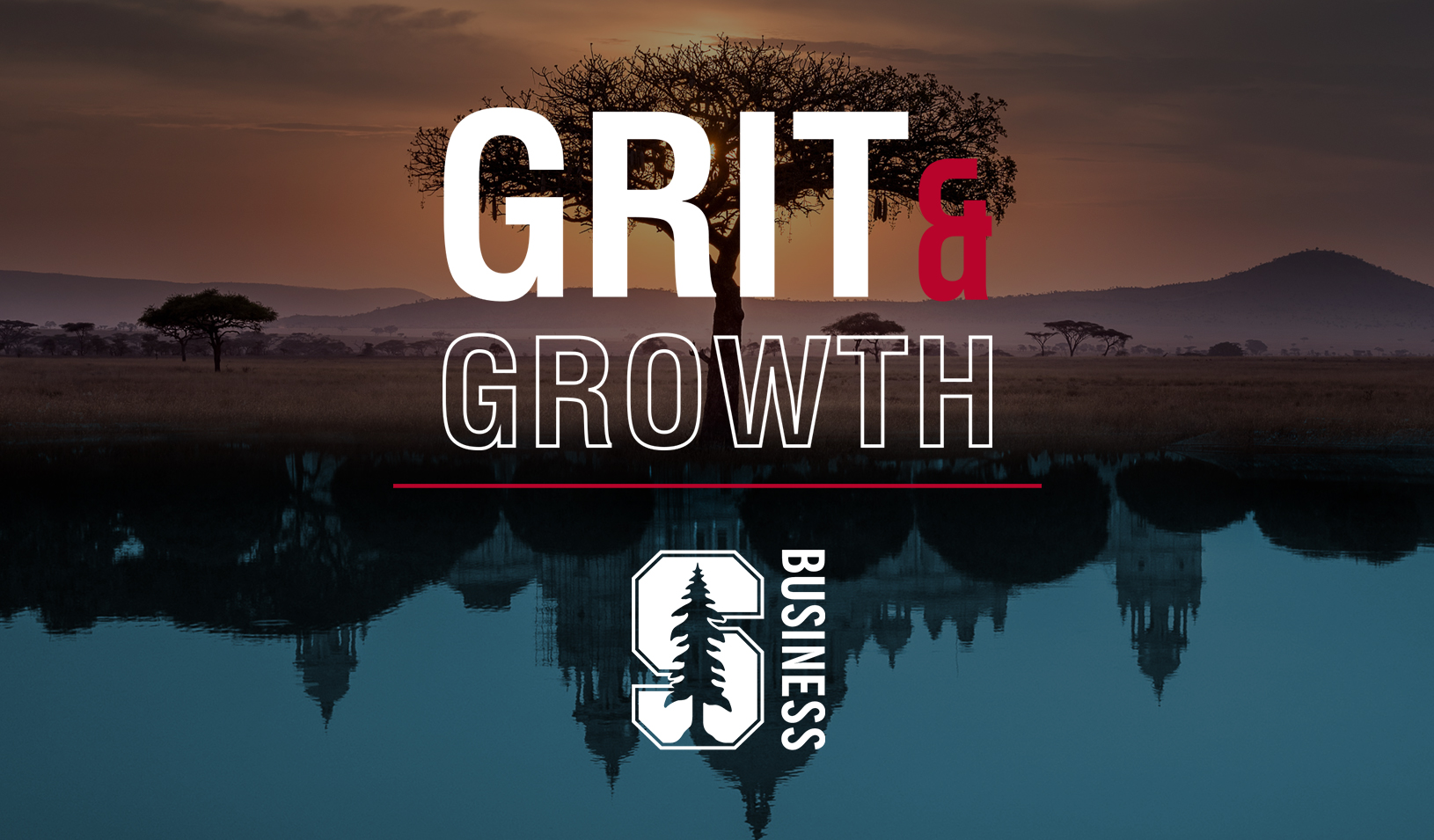Want your audience to pay close attention to you during a panel discussion? Invite them into the conversation. | iStock/webphotographeer
Public speaking is a challenge for many, but panel discussions present their own special set of problems. Unlike a focused keynote address, during a panel you must navigate a conversation while still focusing on your audience’s needs and articulating your main points.
In our Essentials of Strategic Communication MBA course at Stanford Graduate School of Business, we strive to help our students become more confident and compelling panelists and moderators. Here are some of the tactics we teach them that you can apply to your own presentations.
Prepping for the Panel
The best panel discussions are customized, concrete, and connected. By actively preparing your presentations with these ideas in mind, you can increase the likelihood of your success.
Customize for Your Audience
Panel audience members are most compelled by content that answers the questions they have and provides them with the specific insights and tools they’re looking to acquire. However, presenters often only prepare what they want to say without considering what their audience is most interested to hear. In so doing, you run the risk of having a very disengaged and unsatisfied audience.
For example, in our classroom, it would be very easy for us to focus only on best practices related to content and delivery. But our students often have a lot of public speaking anxiety and worry they will never become good presenters, so this approach might leave them less motivated and reluctant to implement the practices we teach.
By reflecting on our students’ needs, we are sure to include content on anxiety management and discuss how Steve Jobs was incredibly nervous before his first TV interview in 1976 or Amy Cuddy (who has the second most-watched TED Talk) almost dropped out of her PhD program rather than present to 20 people due to her nervousness.
Customizing your content based on your audience matters. Therefore, before any panel presentation, you should assess your audience. Ask yourself:
- “What compels or drives this group?”
- “What do they care about most?”
- “What biases or preconceived notions might they have?”
- “What insights or tools would they most like to be provided with?”
If you can’t confidently answer these questions yourself, ask them of the moderator, the panel hosts, or audience members with whom you’re able to connect.
By doing so, you can tailor your content for maximum impact and resonance — leaving your audience feeling like they’re walking away with exactly what they were hoping to learn.
Make Your Information Concrete
Chip Heath, a colleague of ours at Stanford GSB, has conducted extensive research on what makes ideas “stick” — that is, what makes them memorable, engaging, and motivating. He found that one of the primary ways is by taking abstract concepts and conclusions and bringing them to life with concrete stories and examples.
For example, Steve Jobs was once asked to share some of his best advice for success. He could have just shared his abstract advice (as many presenters would), which, in this case, was “ask for help.” This answer is a fine one but not very “sticky.”
Instead, he tells a short story about how, at 12 years old, he called Bill Hewlett (whose number he found in the phone book) and asked if he could borrow some spare parts to build a frequency counter. The story concludes with Jobs not only getting the parts but also a summer job at Hewlett-Packard, working on the frequency counter assembly line. When he finally urges the audience to ask for help because you never know what the impact might be, the audience is much more likely to remember his advice and act on it.
Accordingly, as you prepare for your next panel, make a list of all the key points, insights, best practices, etc. that you’d like to share during your panel. Then go back through that list, and for each item write down a concrete story or example you could share to make it “stickier.” Stories and examples can be real or imagined, as well as about you or someone else.
What’s most important is that you make your messages as concrete as possible. Doing so will make your content not only more engaging in the moment but also more memorable and motivating in the days that follow.
Connect to Your Audience with Analogies
Often on a panel, you’re tasked with explaining complex or new concepts. The best panel presenters are adept at simplifying their content — making it feel more relatable and connected to the audience’s own knowledge and experience.
One of the best ways to accomplish this feat is through analogies. For example, in a keynote address, Nawaf Bitar, CIO of Citadel Securities, describes the current state of data security as “a Polaroid in an Instagram world.” Ned Hallowell, a leading psychiatrist, compares ADHD to having “a Ferrari for a brain with the brakes of a bicycle.” Through these very short but concrete and relatable comparisons, these speakers help create greater clarity for their audiences while also making their content more vivid and memorable.
As you prepare for your next panel presentation, go back through your list of key points and think about possible analogies you could share to make them easier to comprehend and more connected to the audience’s own experiences.
Doing so will not only increase comprehension but also retention of your content. It will also make it more shareable with others.
Participating on the Panel
Two major pitfalls of panel presenting are poorly managed contributions and insular conversations. Panelist contributions that are too lengthy or that ramble require a tremendous amount of cognitive effort for the audience to stay focused and understand the relevance of what is being said. Similarly, when panelists focus too much of their conversation on each other to the exclusion of their audience, the audience becomes bored and disengaged.
To combat these common communicative challenges, we offer the following three best practices: structuring, linking, and connecting.
Structure Your Contribution
As was mentioned earlier, good panel preparation involves stockpiling specific, concrete examples, anecdotes, and analogies that not only relate to your audience’s needs but reveal and reinforce your key points. When your turn comes, structure your contribution in a clear and concise manner. While many different structures exist, our favorite for panels is the What? > So What? > Now What? structure.
When utilizing this structure, you would start by providing your point and giving an example to support it (The What?). Next, you would explain why your point is important (The So What?). Finally, you end by explaining the implications, ramifications, or applications of what you just said (The Now What?).
For example, during a panel on the increasing ubiquity of virtual presenting (e.g., webinars, teleconferences, etc.), you might contribute the following:
“Cleary understanding the features provided by your virtual presenting technology is critical to your success. For example, I recently learned how to take an instantaneous poll during my most recent webinar (The What?). This allowed me to better understand my audience’s level of understanding at that moment in my presentation (The So What?). The next time you present virtually, I strongly recommend you take some time in advance to learn what features you have available to you (The Now What?).”
Link Your Comments to Those That Came Before
When compared to your audience’s ability to track and follow your panel’s conversation, you have at least two distinct advantages. First, you have had the luxury of preparation and likely prior conversation with the other panelists. Additionally, you’re on the stage, which minimizes external distraction. Since your audience does not have these benefits, it is incumbent on you to aid your audience in linking and connecting the ideas that are mentioned. Two crucial facilitation techniques that can help you here are paraphrasing and bridging.
Paraphrasing repeats previous information in a different way (e.g., “What I heard you say is…”) or highlights a key concept before you speak (e.g., “Engagement is challenging…”). It reminds your audience of what was just said and sets their expectations for what will follow. This repetition helps your audience stay focused, increases their information retention, and demonstrates your engaged participation.
While paraphrasing reminds, bridging links. An effective bridge calls out a specific connection between previously spoken ideas and lays the path for your contribution. Unlike paraphrasing, which tends to focus on specific content and wording, bridging often links to higher order ideas and themes. For example, prior to sharing your insights on virtual presenting engagement techniques, you might say: “In revealing their struggles with virtual presenting, Min and Julia were really highlighting the challenges of engaging a remote audience.”
Invite Your Audience into the Conversation
A good panel engages the audience and invites them to collaborate. Unfortunately, it is so easy for panelists to focus on each other and their moderator, which relegates the audience to the role of spectator. We know from research and practical experience that audience engagement fosters positive affect, retention of information, and better recall later. You can invite audience engagement through both verbal and nonverbal means.
Two important verbal tools are to use inclusive language and poll the audience. Inclusive language shows the audience that you represent them and their interests and concerns. Phrases like these can really pull an audience in:
- “Like many in the audience, I…”
- “We all have…”
- “Who among us has (hasn’t)…”
When possible, ask the audience to respond to a quick poll. When you pose the question, be sure to (1) demonstrate how you want them to respond (e.g., raise your hand as you ask the question), and (2) be sure to briefly comment on their response.
Nonverbally, be sure to use your body positioning and eye contact to show your audience you are including them. When answering a question or contributing content, be sure to occasionally look out at the audience, especially when using inclusive language. Further, rather than turning to directly address your fellow panelists, cheat your body posture so you are open a bit to the audience. This positioning alerts them that you are aware of and interested in them.
Panel presentations are exciting opportunities for engagement and knowledge exchange. By following the best practices detailed here, you can maximize the value for you and your audience.
For media inquiries, visit the Newsroom.






